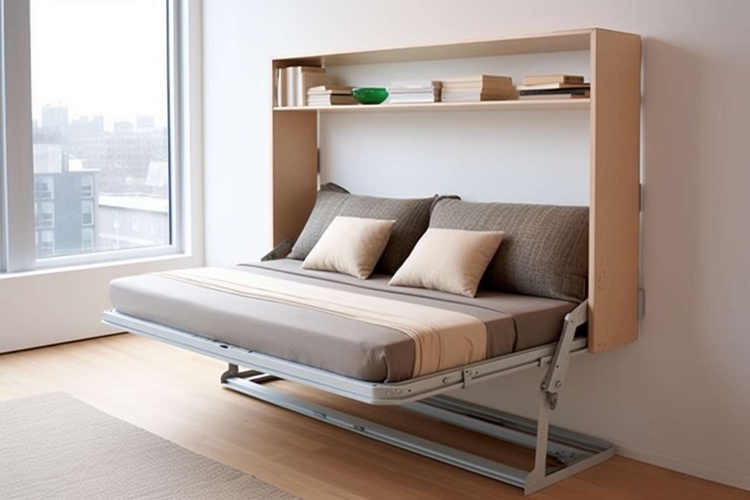Urban Microhomes: Maximizing Space in Compact City Living
In the heart of bustling metropolises, a new real estate trend is reshaping urban living: microhomes. These compact dwellings, typically under 400 square feet, are revolutionizing city landscapes and challenging traditional notions of residential space. As housing costs soar and urban populations surge, microhomes offer an innovative solution to the pressing need for affordable, sustainable city living. This article delves into the world of urban microhomes, exploring their design principles, market impact, and the lifestyle shift they represent in modern real estate.

Initially met with skepticism, microhomes have evolved from experimental projects to a legitimate housing option. Cities like New York, San Francisco, and London have been at the forefront, adapting zoning laws to accommodate these smaller living spaces. The movement represents a significant shift in urban planning and real estate development, prioritizing efficiency and affordability over square footage.
Design Innovations in Micro-Living
The success of microhomes hinges on intelligent design. Architects and interior designers are pushing the boundaries of spatial efficiency, creating living spaces that feel much larger than their actual square footage. Multi-functional furniture, such as beds that transform into desks or dining tables that fold into walls, is standard in these homes.
Vertical space utilization is key, with many microhomes featuring lofted sleeping areas or cleverly concealed storage solutions. High ceilings and large windows are often employed to create a sense of openness, while built-in appliances and custom cabinetry maximize every inch of available space.
Moreover, technology plays a crucial role in enhancing the microhome experience. Smart home systems allow residents to control lighting, temperature, and even transform their living spaces with the touch of a button, further optimizing the limited square footage.
The Economic Impact on Urban Real Estate Markets
The rise of microhomes is reshaping urban real estate markets in significant ways. For developers, these units offer higher returns per square foot compared to traditional apartments. A single floor that might have housed four standard apartments can now accommodate six to eight microunits, potentially increasing rental income.
For buyers and renters, microhomes present an opportunity to live in desirable urban locations at a fraction of the cost of larger apartments. This accessibility is particularly appealing to young professionals, students, and first-time homebuyers who prioritize location over space.
However, the introduction of microhomes into established neighborhoods isn’t without controversy. Some argue that these units drive up overall property values and rents in the area, potentially contributing to gentrification. Others contend that microhomes increase housing density and diversity, offering a wider range of living options in urban centers.
The Demographic Shift: Who’s Living Micro?
While initially marketed towards millennials and young professionals, the appeal of microhomes has expanded to a broader demographic. Empty nesters looking to downsize, frequent travelers seeking a city pied-à-terre, and even small families are embracing micro-living.
This shift is reflective of changing attitudes towards consumerism and ownership. Many micro-dwellers report that living in smaller spaces has led to a more minimalist lifestyle, reducing their environmental footprint and encouraging a focus on experiences rather than possessions.
The communal aspect of many microhome developments is also attracting residents. With limited private space, these buildings often feature extensive shared amenities such as co-working spaces, gyms, and communal kitchens, fostering a sense of community often lacking in traditional apartment buildings.
Regulatory Challenges and Future Outlook
As microhomes gain popularity, cities are grappling with how to regulate this new form of housing. Minimum square footage requirements, building codes, and zoning laws are being reevaluated to accommodate these compact dwellings while ensuring safety and livability standards are met.
Some cities have embraced microhomes as a solution to housing shortages, creating special zoning districts or offering incentives for developers to include micro-units in their projects. Others remain cautious, concerned about the long-term implications of widespread micro-living on urban demographics and infrastructure.
Looking ahead, the microhome trend shows no signs of slowing. As urban populations continue to grow and housing affordability remains a pressing issue, these compact living spaces are likely to become an increasingly important part of the urban housing mix.
Investment Potential and Market Trends
For real estate investors, microhomes represent an intriguing opportunity. The high demand for affordable urban housing, coupled with the potential for greater returns per square foot, makes micro-units an attractive investment option.
However, investors should be aware of the unique challenges associated with microhomes. These units may experience higher turnover rates than traditional apartments, potentially leading to increased maintenance and marketing costs. Additionally, the long-term appreciation potential of microhomes is still uncertain, as the market for these units is relatively new.
Despite these considerations, many analysts predict continued growth in the microhome sector. As cities become denser and more expensive, the demand for efficient, affordable living spaces is likely to increase. Investors who can identify prime locations and partner with innovative developers may find microhomes to be a lucrative addition to their real estate portfolios.
In conclusion, urban microhomes represent a significant shift in the real estate landscape, challenging traditional notions of urban living and offering new solutions to persistent housing challenges. As this trend continues to evolve, it will undoubtedly play a crucial role in shaping the future of our cities and redefining what it means to call a place home in the urban environment.





